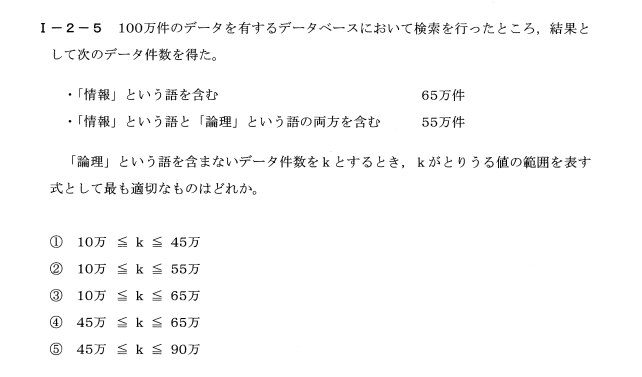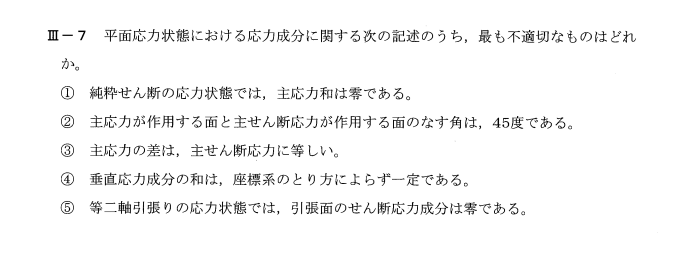TL;DR
DAOは、DApps、プロジェクト、暗号投資ファンドによく使われるガバナンスの一種です。DAOは、そのオープン性と非中央集権性、および自己実行型スマートコントラクトと連携する能力で人気があります。DAOを作成するには、提案と投票を管理するための技術的なソリューションが必要です。ニーズに応じて、さまざまなオープンソースのオプションが用意されています。
はじめに
暗号のルーツが分散化であることから、DAOはブロックチェーン領域で人気のあるガバナンスモデルです。少しの技術的な知識といくつかのツールを使用して、あなたはすぐにDAOを立ち上げて実行することができます。しかし、その前に、良い計画とあなたをサポートするコミュニティがあった方が良いでしょう。何が必要で、どのようにDAOを立ち上げることができるのか、基本的なところから説明しましょう。
DAOとは何か?
DAOとは、Decentralized Autonomous Organization(分散型自律組織)の略です。その名の通り、DAOはコンピュータコードによって自動化された組織で、誰でも(いくつかの基本的な要件を満たす限り)参加することが可能です。自律的であるということは、スマートコントラクトが人間の干渉を受けずにプロセスの大部分を実行するのを助けるということです。DAOはコミュニティによって創設・管理され、その資金やプロジェクトを一括して管理する。
DAOは、イーサリアムの2016年のベンチャーキャピタルファンド「The DAO」でよく知られるようになりました。残念ながら、トークンセールの3週間後までに、このプロジェクトはコードの脆弱性により攻撃を受けることになった。その後、ハードフォークにより資金は回復した。初期の課題にもかかわらず、DAOのコンセプトは年々改善され、現在では分散型金融(DeFi)プロジェクトで最も人気のあるガバナンスモデルの1つになっています。
DAOはそれぞれ異なりますが、ほとんどは同じ基本原則に従っています。DAOのガバナンストークンを保有する者は、保有するトークンの数に比例した議決権を持つ。また、保有者はDAOの運営方法について変更を提案することもできます。
なぜDAOを作成する必要があるのでしょうか?
暗号プロジェクトにとって、DAOにはいくつかの重要な利点があります。おそらく最も重要なのは、このモデルがスマートコントラクトに依存していることです。これらのオンチェーンコードの断片は、DAOが動作するために人間の入力にあまり依存しないようにします。例えば、ある提案の結果がオンチェーンに掲載され、自動的に変更案が出される可能性があります。新しい提案は検閲されることはなく、投票は技術的に不正に行うことはできない。
DAOは、特にほとんどが匿名である場合、コミュニティを組織化するのに有効な方法です。本当の身元に対する説明責任はないことが多く、知らない人を信用しなければならない。DAOを使えば、整合性を保証する技術で効率的に組織化することができる。また、多くのプロジェクトが国際的なチームを持っているため、従来の組織や団体を作るよりも簡単です。最後に、DAOは人を組織化する機能としては安価なオプションです。無料で設定することもできますし、少額の手数料を支払って設定することもできます。
DAOは、その決定に対してあなたに責任を持たせるということをよく理解してください。権力を分散させることで、あなたはもはやあなたのプロジェクトを完全にコントロールすることはできません。もしあなたがガバナンスの意思決定を無視することに決めたら、ほとんどの場合、否定的な結果が生じるでしょう。
What does a DAO need?
Among other things, a successful DAO should cover at least the five points below:
1. A DAO needs a purpose. DAO’s are simply a way of organizing projects or funds. Without a good underlying project and reason, your DAO will have nothing to run.
2. A DAO needs a voting mechanism. This is the primary way people interact with the DAO and make changes. There are multiple ways to do this. You could create your own voting mechanism or use a third-party provider, as we discuss later. Your DAO may even vote to change the mechanism later, but you need to start with something.
3. A DAO needs a governance token or share system. How will people prove their right to an opinion in the DAO? A governance token is very common, and the token often might also be a utility token. A shares system is more common to funds where users deposit cryptocurrencies with the DAO to be invested.
4. A DAO needs a community. Decentralization gets stronger as more people join and participate in the governance of your DAO. This way, power is spread across more stakeholders.
5. A DAO needs a way to manage its funds. Most DAOs will have a treasury or access to some crowdfunding. This is usually held in a multi-signature wallet, which can only be used if all key participants agree.
How do I create my DAO?
On the technical side, you’ll need a mechanism for handling votes and proposals. There is a selection of open-source solutions available to use. Aragon is one popular choice for the Ethereum blockchain. Snapshot is another that works over multiple blockchains. All of them will provide roughly the same structure, but the ways they do it can differ. Some DAO systems work with on-chain polling and others off-chain. The exact one to choose will depend on what your DAO deems important.
Don’t forget to have enough crypto to cover your transaction fees when deploying your DAO to a blockchain.
Aragon
Aragon allows you to create a DAO organization on Ethereum, Polygon, Andromeda, or Harmony. The project provides open-source software through its Aragon client enabling the creation of customized DAOs. The project is also run via a DAO and has its own non-profit organization to manage Aragon’s raised funds.
Creating an Aragon-based DAO is quite simple. You’ll need to:
1. Own an Ethereum Name Service domain.
2. Make sure you have enough crypto to pay the DAO creation fee (0.2 ETH plus gas fees).
3. Create an organization linked to the ENS domain through the Aragon DApp. There are several preset organization structures you can use.
4. Configure your settings, such as vote duration and percentage support needed, and then launch the DAO.
You can find further information in Aragon’s FAQ.
Snapshot
Snapshot is a customizable off-chain voting mechanism. It uses digital signatures via wallets to cast votes based on a snapshot of token owners. A certain block is chosen, and all token holders and/or stakers have their holdings noted. This stops users from purchasing more tokens to influence an open vote. Keeping votes off-chain works well for multi-chain projects where users have governance tokens across many blockchains.
To create your voting system on Snapshot, you’ll need to:
1. Own an ENS domain. This must be on the Ethereum mainnet regardless of what blockchain your project operates on.
2. Link Snapshot to your ENS domain.
3. Customize your space’s settings, such as admins, voting power strategies, terms, etc.
4. Verify your space. This will include having at least 1,000 members and proof of ownership of the related project.
You can find full instructions on Snapshot’s docs.
DAOstack Alchemy
DAOstack Alchemy is a tool for creating DAOs on Ethereum and Gnosis Chain (formerly known as xDAI). Through their UI, you can create a fairly simple DAO, add DAO members, and open your organization. As of writing, the fee for setting up a DAO on Ethereum is roughly 0.2 Ether (ETH), but you don’t need an ENS in this case.
To create a DAOstack DAO, connect your wallet to their DApp, go through the four steps shown, and pay your fee. You will need roughly 0.2 ETH to successfully deploy the DAO.
DAOに必要なものは?
中でも、成功するDAOは、少なくとも以下の5つのポイントをカバーする必要があります。
1. DAOには目的が必要です。DAOは単にプロジェクトや資金を組織化するための手段です。良い根本的なプロジェクトと理由がなければ、あなたのDAOは何も実行することができません。
2. DAO には投票メカニズムが必要です。これは、人々がDAOと対話し、変更を加える主な方法です。これを行うには複数の方法があります。あなた自身の投票メカニズムを作成することもできますし、後で説明するように、サードパーティのプロバイダを使用することもできます。あなたの DAO は、後でメカニズムを変更するために投票することもできますが、何かから始める必要があります。
3. DAO はガバナンストークンまたはシェアシステムを必要とします。人々はDAOで意見を言う権利をどのように証明するのでしょうか?ガバナンストークンは非常に一般的で、そのトークンはしばしばユーティリティトークンである可能性もあります。シェアシステムは、ユーザーがDAOに暗号通貨を預けて投資するファンドがより一般的です。
4. 4. DAO にはコミュニティが必要である。分散化は、より多くの人々があなたのDAOのガバナンスに参加し、参加することでより強くなります。そうすることで、より多くのステークホルダーにパワーが分散されます。
5. 5. DAOは資金を管理する方法を必要とします。ほとんどのDAOは国庫を持つか、いくつかのクラウドファンディングにアクセスすることができます。これは通常、すべての主要な参加者が同意した場合にのみ使用できるマルチシグネチャウォレットに保持されます。
どのようにDAOを作成するのですか?
技術的な面では、投票や提案を処理するためのメカニズムが必要です。使用可能なオープンソースのソリューションの選択があります。Aragonは、イーサリアムのブロックチェーンで人気のある選択肢の1つです。Snapshotは、複数のブロックチェーン上で動作する別のものです。これらはすべてほぼ同じ構造を提供しますが、その方法は異なる場合があります。DAOシステムには、オンチェーンポーリングで動作するものと、オフチェーンで動作するものがある。選択すべき正確なものは、あなたのDAOが何を重要視しているかに依存します。
DAOをブロックチェーンにデプロイする際には、取引手数料をカバーするために十分な暗号を用意することを忘れないでください。
アラゴン
Aragonは、Ethereum、Polygon、Andromeda、またはHarmony上でDAO組織を作成することができます。このプロジェクトは、カスタマイズされたDAOの作成を可能にするAragonクライアントを通じて、オープンソースソフトウェアを提供しています。また、プロジェクトはDAOを介して運営され、Aragonの調達資金を管理するための独自のNPOを有しています。
AragonベースのDAOを作成するのは非常に簡単です。必要なのは
1. Ethereum Name Serviceのドメインを所有する。
2. DAO作成料(0.2ETH+ガス代)を支払うために十分な暗号を持っていることを確認する。
3. Aragon DAppを通じてENSドメインにリンクされた組織を作成します。いくつかのプリセット組織構造があるので、それを利用することができます。
4. 4.投票期間や必要な支持率などの設定を行い、DAOを起動する。
詳細はAragonのFAQに記載されています。
スナップショット
スナップショットは、カスタマイズ可能なオフチェーン投票メカニズムです。ウォレットを介したデジタル署名を利用し、トークン所有者のスナップショットに基づいた投票を行います。あるブロックが選ばれ、すべてのトークン所有者やステイカーがその保有量を記録されます。これにより、ユーザーが公開投票に影響を与えるためにトークンを買い足すことを阻止します。投票権をオフチェーンに保つことは、ユーザーが多くのブロックチェーンにまたがるガバナンストークンを持つマルチチェーンプロジェクトでうまく機能します。
Snapshotで投票システムを作成するには、以下のものが必要です。
1. ENSドメインを所有する。これは、あなたのプロジェクトがどのブロックチェーンで運営されているかに関わらず、イーサリアムのメインネット上にある必要があります。
2. 2. SnapshotをENSドメインにリンクする。
3. 3.管理者、投票権戦略、条件など、自分のスペースの設定をカスタマイズする。
4. 4. 自分のスペースを確認する。これは、少なくとも1,000人のメンバーがいることと、関連するプロジェクトの所有者であることを証明することを含みます。
Snapshotのドキュメントに詳しい手順が掲載されています。
DAOstack Alchemy(錬金術
DAOstack Alchemyは、EthereumとGnosis Chain(以前はxDAIとして知られていた)上でDAOを作成するためのツールです。そのUIを通じて、かなりシンプルなDAOを作成し、DAOメンバーを追加し、組織をオープンすることができます。執筆時点では、Ethereum上のDAOを設定するための手数料はおよそ0.2Ether(ETH)ですが、この場合、ENSは必要ありません。
DAOstack DAOを作成するには、ウォレットを同社のDAppに接続し、表示されている4つのステップを経て、手数料を支払います。DAOのデプロイを成功させるためには、およそ0.2ETHが必要です。
Examples of successful DAOs
If you need some inspiration on the rules and set-ups that work best, take a look at some of the established DAOs in crypto. Some run incredibly detailed and open organizations that operate like large businesses. A few examples to look at include:
MakerDAO
MakerDAO is one of the oldest, most successful DAOs on the market. The organization manages the crypto-collateralized DAI stablecoin. They split proposals into Governance Polls for non-technical decisions and Executive Votes for smart-contract changes. Anyone holding MKR, the project’s governance DAO token, can participate.
Aave
Aave is a DeFi lending platform on Ethereum that lets holders of the ERC-20 token AAVE or staked AAVE participate in its DAO. Along with project changes, Aave governance also votes on new projects built on the protocol and Aave Grants to fund ideas.
Uniswap
Uniswap is a multi-chain Automated Market Maker (AMM) that has inspired a generation of DeFi projects. It’s one of the largest decentralized exchanges, and UNI holders can vote on and create proposals. To submit a new proposal, you need to hold at least 0.25% of the UNI’s total supply. To encourage healthy discussion, there is a governance forum for community members to debate changes.
Conclusion
Creating your own DAO is easy to do technically, but running one successfully is difficult. As you’ve seen, many simple tools exist to get you running quickly. However, the key to creating your DAO will be your project and community.
成功したDAOの例
最も効果的なルールとセットアップについていくつかのインスピレーションが必要な場合は、暗号で確立されたDAOのいくつかを見てみましょう。いくつかは、大企業のように動作する信じられないほど詳細かつオープンな組織を実行しています。いくつかの例を見てみましょう。
MakerDAO
MakerDAOは、市場で最も古く、最も成功したDAOの1つです。この組織は、暗号担保のDAI安定コインを管理しています。彼らは提案を、非技術的な決定のためのガバナンス投票と、スマートコントラクトの変更のためのエグゼクティブ投票に分けます。プロジェクトのガバナンスDAOトークンであるMKRを保有していれば、誰でも参加することができる。
Aave
AaveはEthereum上のDeFiレンディングプラットフォームで、ERC-20トークンAAVEまたはステイクドAAVEの保有者がそのDAOに参加することができます。プロジェクトの変更とともに、Aaveガバナンスは、プロトコル上に構築された新しいプロジェクトや、アイデアに資金を提供するAave Grantsの投票も行っています。
Uniswap(ユニスワップ
UniswapはマルチチェーンのAutomated Market Maker (AMM)であり、次世代のDeFiプロジェクトにインスピレーションを与えています。最大規模の分散型取引所であり、UNIホルダーはプロポーザルに投票したり、プロポーザルを作成したりすることができます。新しい提案を提出するには、UNIの総供給量の0.25%以上を保有する必要があります。健全な議論を促進するために、コミュニティメンバーが変更について議論するためのガバナンスフォーラムが用意されています。
結論
独自のDAOを作ることは技術的には簡単ですが、それを成功裏に運営することは困難です。あなたが見てきたように、多くの簡単なツールは、あなたが迅速に実行するために存在しています。しかし、あなたのDAOを作成するための鍵は、あなたのプロジェクトとコミュニティでしょう。
<参考記事>




